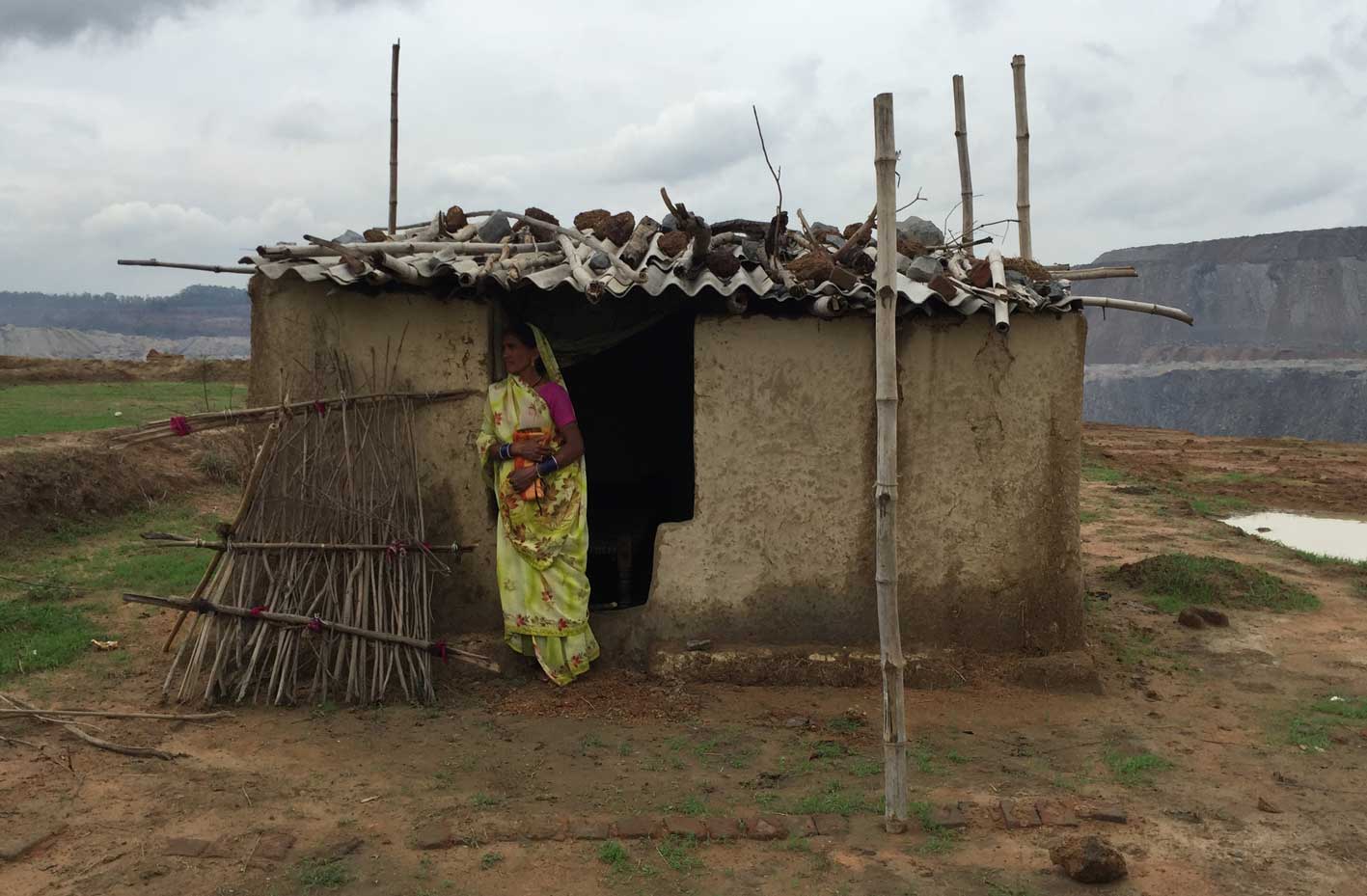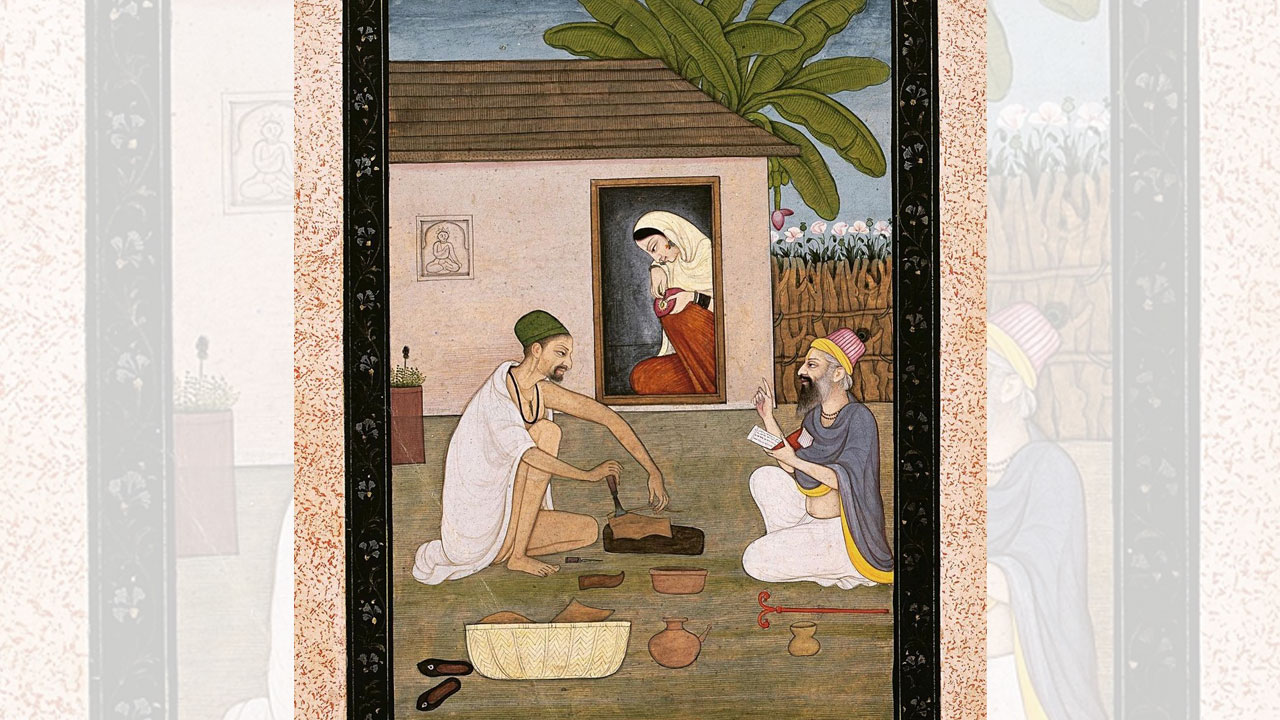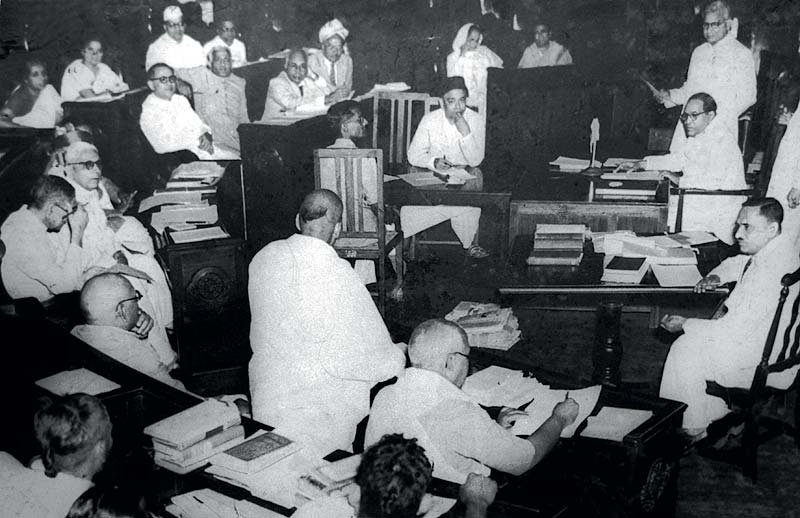Forest and human habitation have been symbiotically connected to each other for centuries. In India, historical evidence, such as seals and painted pottery recovered from the Indus Valley, shows the symbols of peepal and babul indicating the use of forest produce during the Mohenjodaro-Harappa civilization (about 5000-4000 BC). The Gupta period (200-600 AD) recorded the distribution of forests similar to that of the Mauryan period. The Mughal period (1526-1700) was characterized by an unhindered clearing of forests for timber and cultivation. With the advent of the British rule, direct confrontation with the Adivasis began, which had much to do with the forests.
The rich Indian forests
By the mid-18th century, the British had understood the richness of the thick, lush green forests in India and they sought control over the forests either directly or through the Zamindars and moneylenders. One of the reasons was the need of timber for construction of houses and other works not only in India but also back in England. They went about reorganizing and consolidating the Zamindari system, which was part of their concrete agenda of interfering in the arena of productive and natural resource zones. As a result, the subjects felt the pressure. The British began intruding into territories that were home to the Adivasis, resulting in several confrontations.
While scrutinizing the first hundred years (1760s-1860s) of Indian Adivasi rebellion, we find that forest laws didn’t exist and unregulated extraction of timber and other forest resources went on. After the first proposal for railways was made in Madras in 1832, timber turned out to be a necessary raw material not only for the railway lines, in which they were used for the sleepers, but also for the coaches and locomotives. In 1837, the first train – a freight train called Red Hill Railway – was flagged off. Powered by a rotary steam locomotive, the train ran between Red Hills and Chintadripet bridge in Madras.
The East India Company planned for another railway line from Calcutta to Delhi in 1846, which did not materialize. The first passenger train ran between Bombay and Thane in 1853. Calcutta and Madras followed suit. Thus the building of the railways meant that timber was needed during this phase. Indian teak was also suitable for shipbuilding. In fact, sturdy ships made of Indian teak had saved England during the war with Napoleon (1803-15).
In the initial phase, the British acquired timber mostly from Burma. They had been trading in timber in Moulmein since Burma’s Tenasserim was ceded to them in 1826. Later for the same reason, the British annexed the province of Pegu in 1852. However, over a period of time, they turned to the Indian forests.
Evolution of forest laws in India
In the early 1850s, British entry into India’s forest zones, inhabited by the Adivasi populations, drastically increased. In 1856, taking cognizance of the Santhal revolt of 1855 and the need for railway expansion, Lord Dalhousie, the governor-general, emphasized the need for a permanent forest policy since obtaining adequate supplies of timber was becoming increasingly difficult. In 1860, after settling down from the upsetting events of 1857, the British put restrictions on Adivasis’ shifting cultivation. In 1864, the British established the Imperial Forest Department.
In 1865, the first law, namely The Indian Forests Act of 1865, came into existence, which extended the claims of the British over all the forests in India. In 1878, the law was modified and The Forest Act of 1878 introduced, curbing the centuries-old traditional use of forests by communities and securing eminent domain over forestry. On the one hand, this Act established legally a virtual State monopoly over the forests, and on the other hand, it attempted to establish that the customary use of the forests by the villagers was not a “right” but a “privilege” that could be withdrawn at will by the British.
In 1894, based on their Forest Policy, the British divided the forests into four classes: (a) forests that required mandatory preservation, (b) forests for timber for commercial purposes, (c) minor forests, and (d) pasture lands. Overriding the earlier provisions of 1878 Act, this policy envisaged the release of forestland for cultivation, subject to certain safeguards. This was the only relief for the Adivasis and other indigenous people living in the forest zones. It also left the outlying areas of reserved forests for the supply of the villagers’ needs. But at large, this policy clearly spelt out the supremacy of the State’s interest over people’s interest.
The Indian Forest Act of 1927 was in continuance with the principles of forest use of 1878. It was created to serve the British need for timber, with no provisions of conservation. It sought to override the customary rights and forest management systems by declaring forests as state property and exploiting their timber. This Act did not lay down a specific definition for forests. It categorized forests as reserve forest, protected forest and village forest. The entry of the common man into reserved forests became illegal, and there were more restrictions on shifting cultivation. However, under the law, there was scope for dereservation of forests.
Adivasi and Indigenous peoples’ rebellions in British India
Forest policy and management has been a subject of considerable debate and conflict. Ever since the British established the Forest Department and enacted legislations related to forestry in the second half of the 19th century, it had ignored two crucial aspects: first, the well-established traditional systems of conservation and sustainable use of forests by the Adivasi and indigenous communities, and second, the critical ecological and social and cultural roles the forests play.
The major rebellions in the pre-1864 phase – before the establishment of the forest department – cannot be simply described as a peasant revolt against the British or local kings or Zamindari or money-lending for reasons of taxes; rather, it has to be understood in the context of external forces intruding into the Adivasi zones, which were essentially the hills and forests. An in-depth study of the background and history of these movements will reveal that it was not just the economic and cultural importance of land and forests and people being deprived of it that gave rise to them but that this involved an undeclared clash of cultures between the Adivasis and non-Adivasi vested interests bulwarked by the rulers. Some of the key movements were Tilka Manjhi-led rebellion in Santhal hills (1770-85), Halba Dongar (Halbas) in Bastar (1774-79), Mahadev Koli in Maharashtra (1784-85), Tamar of Chhotanagpur (1789; 1894-95), Panchet estate sale (1798), Kuruchi in Wayanad (1812), Singpho in Assam (1825; 28;43; 49), Kol uprising (including the Ho and Munda) (1832), Khond in Odisha (1850), Santhal of Chhotanagpur (1855), Sonakhan in Chhattisgarh (1856-57), Bhil of Gujarat (1857-58), Andamanese of Andaman (1859), Lushai of Tripura (1860), Synteng of Jaintia Hills (1860-62), Juang in Odisha (1861) and Koya of Andhra Pradesh (1862).

The Hul revolt led by the four Murmu brothers, Sidhu, Kanhu, Chand and Bhairav, took place in the forest and hills. While the apparent cause was money-lending and Zamindari, the Adivasis probably also felt that their entire land and forests were being usurped. The Sonakhan rebellion of 1857 happened ahead of the more well-known mutiny the same year. It was led by Veer Narayan Singh, another Adivasi king, who also fought in a context similar to that of the Santhals in 1855. Sonakhan itself has been a forest region and has thick forests of Barnawapara in its vicinity. In 1852, there was a growing unrest among Kols and other forest-based communities in and around Bombay due to extensive tree-felling but a revolt did not break out.
After 1864, in a centralized politico-administrative phase, alienation of forestland was complete with the imperial government legalizing its ownership of the forests and implying that forest-based communities were illegal occupiers and encroachers. Hunting was declared illegal for everyone apart from the British officials, Zamindars, feudatory kings, local landlords, etc. This phase witnessed a series of revolts in which Adivasis responded fiercely whenever there were attempts to intrude into their domain and deprive them of their land and forests and violate or insult their traditional customs, culture, deep-rooted conventions, civic rights and judicial system. These indigenous peoples’ rebellions involved the Santhals of Dhanbad (1869-70), Nagas of Northeast India (1879), Koyas of Malkangiri in Odisha under the leadership of Tammandora (1880), Sentineleses of Andaman and Nicobar Islands (1883), Mundas of Chhotanagpur (1889), Lushais (1892), the Mundas under the leadership of Birsa Munda (1895), Adivasis of Bastar (Bhumkal and another revolt led by Gunda Dhurr, 1910-11), Samp Sabha led by Govind Guru and the Bhils at Mangadh hill of Rajasthan and Gujarat (1913-16), Kukis of Manipur (1917-19), Koyas of Rampa (1922), Nagas of Northeast India (1932), Gond and Kolam tribes in Adilabad of Telangana (1941), and Adivasis of Koraput, Orissa, under the leadership of Lakshmana Naik (1942).
Forest laws and people’s resistance
In post-Independence India, in 1952, the Indian government passed a forest policy in which “national interests” overrode all community interests and forests were viewed as a national asset. It was made clear that local priorities and interests and claims of the communities around forest areas should be subservient to larger national interests. In 1972, the Wildlife Protection Act was passed demarking specific forest areas for wildlife, imposing a complete ban on human habitation and entry. All National Parks and Wildlife Sanctuaries were brought under the provisions of this Act.
In 1976, National Commission on Agriculture recommended that “production of industrial wood would have to be the raison d’etre for the existence of forests”, and this would have priority over the needs of individuals and communities. The same year witnessed the 42nd Amendment to the Constitution, which transferred the forests from the State List to the Concurrent List, thus re-emphasizing the role of the central government in the management of forests.
In 1980 the Forest Conservation Act was passed to check further deforestation and conserve forests in the following ways: (a) restricting the use of forest land for non-forest purposes, (b) preventing the dereservation of forests that have been reserved under the Indian Forest Act 1927, (c) restricting leasing of forest land to private individuals, authority, corporations not owned by the Government, and (d) preventing clear-felling of naturally growing trees. In essence, the Act merely shifts decision-making powers concerning forestland use from the State to the Centre.
The phase from 1947 to 1986 saw large-scale industrial development primarily in the mining sector as part of the central government’s five-year plans. For such projects, large chunks of land, including forests, was cleared for industrial purpose with a strategic four-phase method: selective felling (1947-60), clear-felling and monoculture plantations (1960-75), farm forestry (1975-85), and import and captive plantation (1985 onwards). However, Adivasi rights over forests and forestland were not restored with the continuity of the principles of eminent domain. These factors gave rise to several democratic forest-based movements and struggles in the Adivasi hinterland revolving around the questions of (a) exploitation by outsiders, (b) economic deprivation, (c) political discrimination, and (d) socio-cultural autonomy.

The effect of these struggles was that the National Forest Policy 1988 came up with a drastic shift in the approach to management of forests in comparison to the post-Independence Forest Policy of 1952. Since it was only a policy document, it didn’t have to be enforced like a piece of legislation. The Environment Protection Act 1986 though held some hope for the people’s struggles in their fight against industrial giants, but that was short-lived. The Act itself had come into existence based on people’s consistent demand and struggles for the need of a legal framework on environmental protection. This law makes assessment of environmental impact and socio-economic loss/benefit of an industrial project and public hearings mandatory, while the Panchayat (Extension to Scheduled Areas) Act 1996 (PESA) requires the promoters to seek the consultative approval of the gram sabha. All these provisions proved to be effective for a while. But over the past decade or so, public hearings have been stage-managed. Even when the local residents bring all evidence and claims of their dependence on forests and also regarding the fragility of the environment, the authorities do not pay heed. They eventually face displacement and are dispossessed of their land. Thus environmental law (even with PESA and FRA) has turned out to be an “environmental” ritual.
The Adivasi continued their struggles to regain the rights that had been taken away. More recently, the Forest Rights Act 2006 (FRA) gave rise to some hope that the historical injustice done to the Adivasis would be corrected. The Act involves many actors (departments and ministries) and several sets of laws to secure land rights. It categorizes forest rights thus: (a) individual forest rights and (b) community forest rights to be provided to (i) Adivasis and (ii) other traditional forest dwellers. However, the other laws as well as the actors play a much conflicting role. According to this Act any external agency should first secure the consensus of the gram sabha for initiating any development projects or industrial activity.
Development projects and industrialization and mining has raised several questions with regard to life and livelihood of traditional forest-based communities. Just a few days ago, the central government opened 41 coal blocks across four states for auction. Ten of them fall in Madhya Pradesh, nine each in Chhattisgarh, Jharkhand and Odisha, and three in Maharashtra. These include forest regions that Adivasis and other indigenous forest-based groups depend on for their livelihoods and even inhabit. Resettlement and rehabilitation is simply not an option or a plan for it does not exist, putting their lives at risk.
Ultimately, the struggle for the forest rights boils down to the fact that the ancestral lands and habitats of the people were not adequately recognized in the consolidation of State forests during the colonial periods as well as in independent India. This resulted in a historical injustice being done to the Adivasis and other traditional forest dwellers, who are integral to the forest ecosystem and crucial for its survival.
Copy-editing: Anil
Forward Press also publishes books on Bahujan issues. Forward Press Books sheds light on the widespread problems as well as the finer aspects of the Bahujan (Dalit, OBC, Adivasi, Nomadic, Pasmanda) community’s literature, culture, society and culture. Contact us for a list of FP Books’ titles and to order. Mobile: +917827427311, Email: info@forwardmagazine.in)






